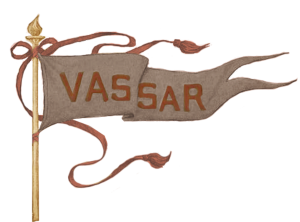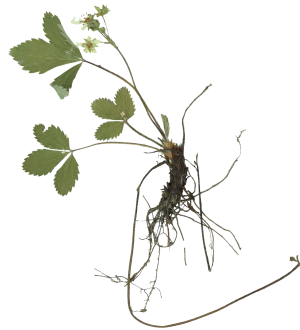Catching Herself In the Middle: How Chinese-American Adoptees and Their Parents Construct Narrative and Ethnic Identity
Document
Abstract
Since 1992, over 85,000 children have been adopted from China by U.S. citizens (Miller-Loessi and Kilic 2001:246; U.S. Department of State 2013). Most of these adoptees are girls. They were abandoned as infants due the combined factors of patrilineal culture and to China's one-child per person policy. While a plethora of studies examine adoptive parents' experiences raising Chinese-American adoptees (CAAs), little research has been conducted on the lives of CAAs themselves. Utilizing previous literature on adoptive parents, I aim to uncover the beliefs and experiences of CAAs in regards to their narrative and ethnic identities. I conclude that adoptee identity is shaped by multiple factors, including parental approaches to birth/ethnic heritage, racism and bio-centrism from community members, and self-agency.
Racism causes CAAs to question their ethnicities and family ties. From their parents, adoptees learn to seek out birth origins while still creating alternative adoptive beginnings; and to craft an ethnic identity from simplistic elements of Chinese culture. All the while, adoptees come up with novel and empowering interpretations of origins, race and Chinese society. They establish their own organizations to provide each other with support and pride. The conflicting and fluid beliefs of adoptees and their parents reflect the struggles of a diasporic population stuck between two worlds.
Racism causes CAAs to question their ethnicities and family ties. From their parents, adoptees learn to seek out birth origins while still creating alternative adoptive beginnings; and to craft an ethnic identity from simplistic elements of Chinese culture. All the while, adoptees come up with novel and empowering interpretations of origins, race and Chinese society. They establish their own organizations to provide each other with support and pride. The conflicting and fluid beliefs of adoptees and their parents reflect the struggles of a diasporic population stuck between two worlds.
Details
Advisors
Degree Name
Department or Program
Document Type
Peer Reviewed
Not Reviewed
Publication Date
2014-01-01
English
Class Year
Repository Collection
Display hints
Document Type
We're City Lifers: Transformative Community Organizing in Boston's City Life/Vida Urbana
Document
Abstract
City Life/Vida Urbana is a base-building community organization committed to structural transformation through racial, economic, gender, and other forms of social justice. Its local work currently focuses on preventing evictions as a result of foreclosures. Most people come to City Life out of the desire to save their homes. However, all City Life organizers noted that saving one's own home appears to have no impact on one becoming a long-term participant in the movement, or a negative impact when this is accomplished through purely service rather than service-supported direct action. People stay in City Life due to the "incentives" of (1) community and a culture of solidarity, (2) radical moral ideology, and (3) the power members themselves have internally within and externally through the organization. These three organizational characteristics are produced through solidaristic cultural practices and community building, radical political education, the development of organic intellectuals, leadership development, bottom-up organizational structure, and militant and effective protest tactics. Through these mechanisms and "incentives" City Life is able to develop a radical organizing project notable for its ability both to build a substantial base and win gains in the present and to build a significant, committed, and talented base for a long-term transformative movement. City Life therefore exemplifies a radical alternative to neo-Alinskyist community organizing models.
Details
Advisors
Degree Name
Department or Program
Document Type
Peer Reviewed
Not Reviewed
Publication Date
2014-01-01
English
Class Year
Repository Collection
Display hints
Document Type
Constructing Nature Through Cartoons: Cultural Worldviews of the Environment in Disney Animated Film
Document
Details
Advisors
Degree Name
Department or Program
Document Type
Peer Reviewed
Not Reviewed
Publication Date
2014-01-01
English
Class Year
Repository Collection
Display hints
Document Type
Repackaging Racism: The Role of Sickle Cell Anemia in the Construction of Race as Biological
Document
Details
Degree Name
Department or Program
Document Type
Peer Reviewed
Not Reviewed
Publication Date
2014-01-01
English
Class Year
Repository Collection
Display hints
Document Type
Textures and Symbols: Creation through Association
Document
Details
Advisors
Degree Name
Department or Program
Document Type
Peer Reviewed
Not Reviewed
Publication Date
2014-01-01
English
Class Year
Repository Collection
Display hints
Document Type
We in Space: Wandering in the Work of Valeria Luiselli
Document
Details
Advisors
Degree Name
Department or Program
Document Type
Peer Reviewed
Not Reviewed
Publication Date
2014-01-01
English
Class Year
Repository Collection
Display hints
Document Type
Scripting (In)security: Cartographic Violence and Performances of Securitization in the Western Sahara
Document
Abstract
Throughout the forty-year conflict over the Western Sahara, the United States has supported Morocco's occupation of the disputed territory. This overall policy has remained relatively consistent over time, yet constantly subjected to contestation. The debates over policy and various modes of exercising American power in this North African region have shifted over time as the structure of global politics changed. My research is guided by two interwoven questions: (1) How did the discourses on the Western Sahara conflict produced by U.S. policymakers change or remain consistent with shifts in the perceived imperatives of foreign policymaking from the Cold War to the War on Terror? And, (2) what do these discourses reveal about the state and the process of statemaking? My project is to explore how the Western Sahara has been scripted as a place of insecurity in the geopolitical imaginations of U.S. foreign policymakers and what this process can reveal about the nature of the state.
I examine the practices of representation, with a particular focus on discourses of security, which have situated the Western Sahara conflict in the imaginary geographies of U.S. policymakers. I trace the reformulations and reiterations of these discourses across historical shifts in international politics. Through close examination of the discourses of foreign policymakers recorded in official texts, I explore continuities, ruptures and contestations of representations of the conflict and their impact on policy decisions. My research specifically focuses on the language used by congressmen, State Department officials and presidents, seen in the texts of congressional hearings and other government documents. I argue that historical moments of opportunity to resolve the conflict were foreclosed by the discourses of security and the imperial practices of American statecraft. I conclude that understanding these discourses as part of a performative process of statecraft helps to reveal the vulnerability of the imperial state, and to make possible interventions into the discourses to produce real change and a just resolution to this conflict.
I examine the practices of representation, with a particular focus on discourses of security, which have situated the Western Sahara conflict in the imaginary geographies of U.S. policymakers. I trace the reformulations and reiterations of these discourses across historical shifts in international politics. Through close examination of the discourses of foreign policymakers recorded in official texts, I explore continuities, ruptures and contestations of representations of the conflict and their impact on policy decisions. My research specifically focuses on the language used by congressmen, State Department officials and presidents, seen in the texts of congressional hearings and other government documents. I argue that historical moments of opportunity to resolve the conflict were foreclosed by the discourses of security and the imperial practices of American statecraft. I conclude that understanding these discourses as part of a performative process of statecraft helps to reveal the vulnerability of the imperial state, and to make possible interventions into the discourses to produce real change and a just resolution to this conflict.
Details
Advisors
Degree Name
Department or Program
Document Type
Peer Reviewed
Not Reviewed
Publication Date
2014-01-01
English
Class Year
Repository Collection
Display hints
Document Type
How to Make it Rain: A Practical Analysis of Storytelling Forms
Document
Abstract
The following is an experiment in practical analysis of storytelling media. The project seeks to explore what insights can be gained about media specificity and adaptation theory
through the process of constructing a story and adapting it into background notes, a short story, a one-act play, and a comic book. A meta paper analyzes the constraints and opportunities afforded by each media as observed through the process of creation and adaptation. The historical notes will go last before the paper to facilitate more surprise in the reading experience. There are endnotes classified into H/N (historical note), A/N (author's note), P/S (primary source), ED/N (editing notes), AD/N (adaptation note), as well as notation marking notes to do with form (F), observations (O), and revelations (R). These notes mean to comment upon the process of adaptation, delineate the connections to historical sources, and provide a window into the process of creation and revision.
through the process of constructing a story and adapting it into background notes, a short story, a one-act play, and a comic book. A meta paper analyzes the constraints and opportunities afforded by each media as observed through the process of creation and adaptation. The historical notes will go last before the paper to facilitate more surprise in the reading experience. There are endnotes classified into H/N (historical note), A/N (author's note), P/S (primary source), ED/N (editing notes), AD/N (adaptation note), as well as notation marking notes to do with form (F), observations (O), and revelations (R). These notes mean to comment upon the process of adaptation, delineate the connections to historical sources, and provide a window into the process of creation and revision.
Details
Advisors
Degree Name
Department or Program
Document Type
Peer Reviewed
Not Reviewed
Publication Date
2014-01-01
English
Class Year
Repository Collection
Display hints
Document Type
Rethinking the American High School History Textbook: An Analysis, Critique, and Reformation of American History-Telling in the Classroom
Document
Details
Advisors
Degree Name
Department or Program
Document Type
Peer Reviewed
Not Reviewed
Publication Date
2014-01-01
English
Class Year
Repository Collection
Display hints
Document Type
The Web Weaved by Culture: Telehealth in Native America
Document
Abstract
Telehealth, with its focus of addressing healthcare at a distance and being cost efficient, has been suggested to be a good fit in Native American communities. However, very little study has been done bridging the two; even less has been done attempting to analyze the unique ways telehealth can be utilized. In what way is telehealth shaped or adapted by cultural factors? This work not only exhibits the ways Native peoples' distinctive historical and political relationships to the U.S. Federal Government influence their health care, but also the unique cultural worldviews that seem to encompass their health practices. In this way, culture and health are examined in a variety of scopes to reveal that conceptions of healthcare can ultimately be altered.
Details
Advisors
Degree Name
Department or Program
Document Type
Peer Reviewed
Not Reviewed
Publication Date
2014-01-01
English
Class Year
Repository Collection
Display hints
Document Type

